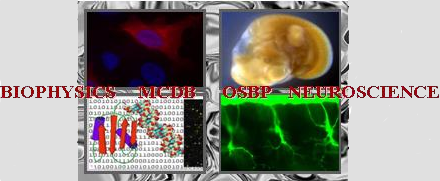Poster abstracts
Poster number 83 submitted by Benjamin Noble
Enhanced synaptogenesis in autonomic circuitry following spinal cord injury
Benjamin Noble (Neuroscience Graduate Program), Masaki Ueno (Cincinnati Childrens Hospital), Cagla Eroglu (Duke University), Yutaka Yoshida (Cincinnati Childrens Hospital), Phillip G. Popovich (Center for Brain and Spinal Cord Repair, Department of Neuroscience, The Ohio State University. )
Abstract:
Autonomic dysreflexia (AD) is a potentially fatal complication of spinal cord injuries (SCI) occurring at or above the fifth thoracic vertebral level. The hallmark symptom of AD is unchecked activation of the spinal autonomic (sympathetic) reflexes. This can lead to various complications such as sweating, immune suppression, and cerebral hemorrhage. The mechanisms responsible for the onset and progression of AD are not well defined, but since supraspinal brain connections are mostly lost after high-level SCI, maladaptive plasticity within “presympathetic” neurons (neurons synapsing on the sympathetic preganglionic neurons of the autonomic nervous system) is expected. We hypothesize that (1) the increased frequency of spontaneous AD is caused by enhanced excitatory synaptogenesis on sympathetic preganglionic neurons (SPNs) within the intermediolateral nucleus (IML), (2) synapse number will increase as a function of time post-injury correlating with an increase in AD frequency, and (3) silencing the excitatory sympathetic circuitry will prevent the development of AD and the resulting complications. The overall number of synapses was quantified using confocal microscopy and automated quantification programs. Our data reveal an increase in synapses over time, reaching maximal numbers at 28 days post injury, a time coinciding with the peak number of daily dysreflexic episodes, suggesting a direct link between post-SCI synaptogenesis and AD. To silence this newly developed circuitry, we are utilizing Designer Receptors Exclusively Activated by Designer Drugs (DREADDs). DREADDs are specially designed receptors that can be targeted to a specific subtype of cells. Though preliminary, pilot studies have shown that the silencing of this circuitry can ameliorate certain sequelae of AD, such as immune suppression, measured by spleen size and immune cell quantification. These findings may identify a potential method of therapy for post-SCI patients suffering from AD.
References:
Zhang, Y., et al. Autonomic dysreflexia causes chronic immune suppression after spinal cord injury. J Neurosci 33, 12970-12981 (2013).
Lucin, K.M., Sanders, V.M., Jones, T.B., Malarkey, W.B. & Popovich, P.G. Impaired antibody synthesis after spinal cord injury is level dependent and is due to sympathetic nervous system dysregulation. Exp Neurol 207, 75-84 (2007).
Meisel, C., Schwab, J.M., Prass, K., Meisel, A. & Dirnagl, U. Central nervous system injury-induced immune deficiency syndrome. Nat Rev Neurosci 6, 775-786 (2005).
Brommer B, Engel O, Kopp MA, Watzlawick R, Müller S, Prüss H, Chen Y, DeVivo MJ, Finkenstaedt FW, Dirnagl U, Liebscher T, Meisel A, Schwab JM. Spinal cord injury-induced immune deficiency syndrome enhances infection susceptibility dependent on lesion level. Brain. 2016 Mar;139(Pt 3):692-707.
Keywords: Spinal Cord Injury, Autonomic Dysreflexia, Neuroplasticity
